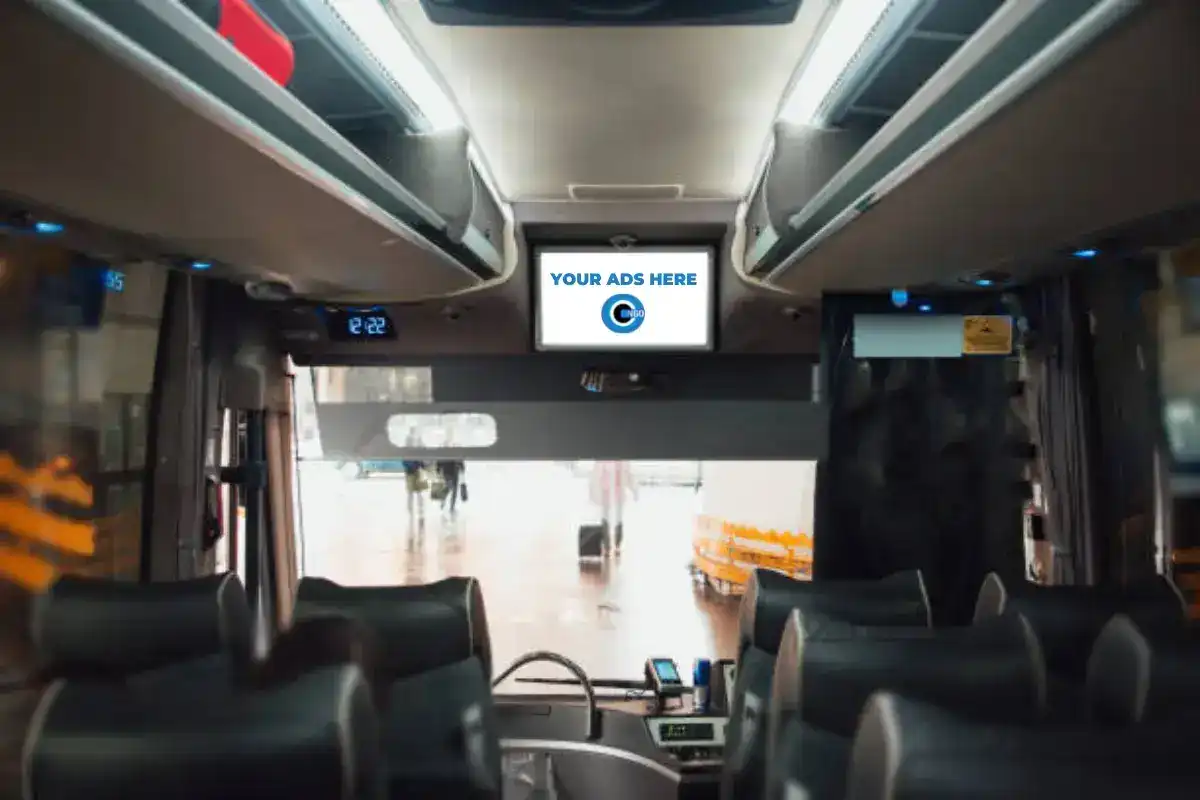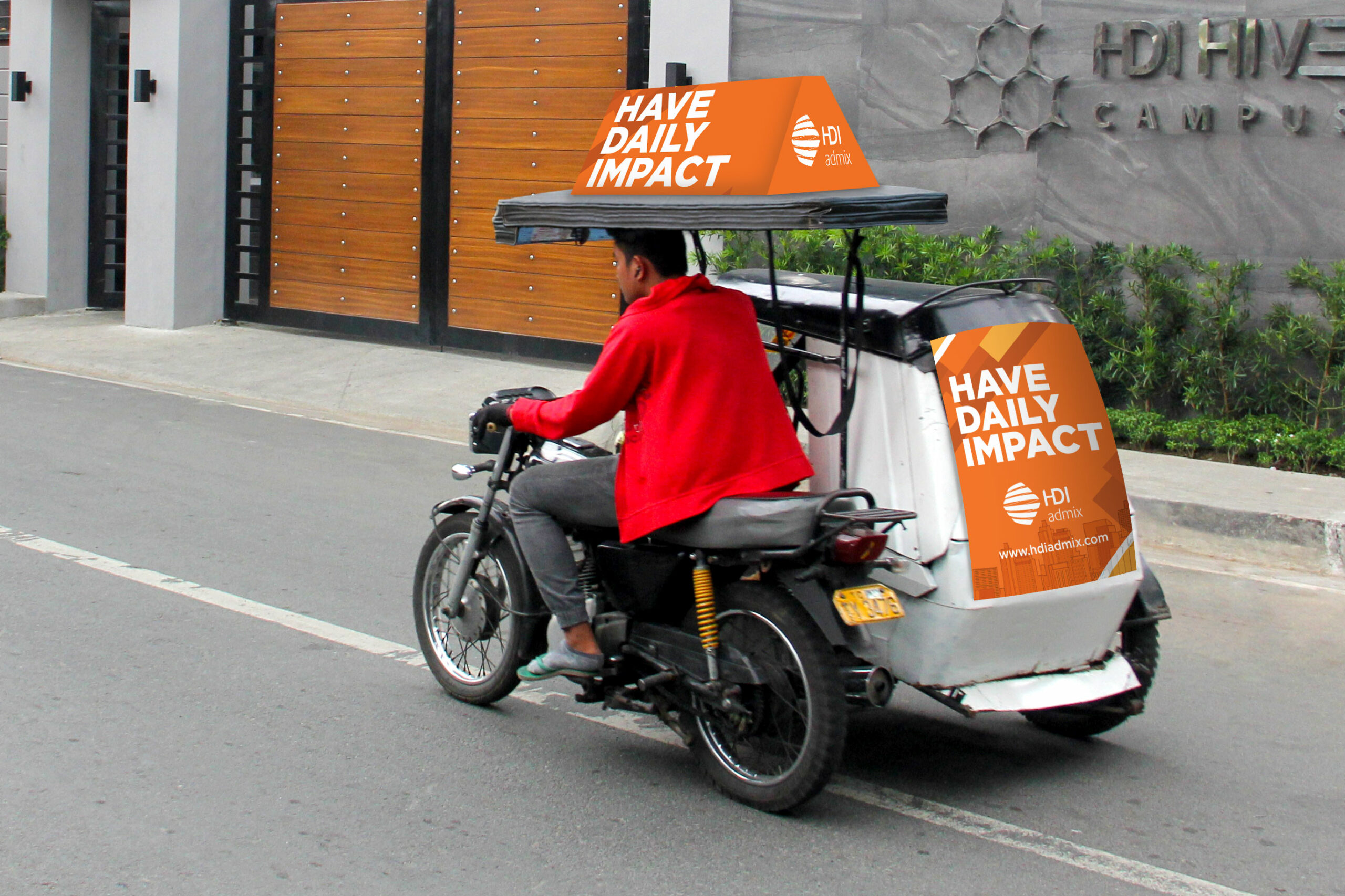Increase Your Company with Transit Advertising Philippines
Increase Your Company with Transit Advertising Philippines
Blog Article
Comprehending the Function of Transportation Advertising in Enhancing Brand Name Exposure and Consumer Interaction
Transportation marketing has become an essential aspect in the advertising landscape, providing unique chances for brand names to raise their presence and engage customers properly. With the ability to reach a varied and restricted audience during their everyday commutes, these advertising and marketing approaches are not just about visibility; they have to do with creating meaningful connections with possible consumers. As we explore the multifaceted advantages and ingenious techniques within transportation marketing, it becomes necessary to think about exactly how these components jointly affect customer perception and habits, questioning concerning their long-term effect on brand loyalty.
Definition of Transportation Advertising
Transportation advertising refers to the technique of promoting items, solutions, or brand names via advertisements placed in and around mass transit systems. This type of advertising incorporates a variety of placements, including posters on trains and buses, electronic displays at transportation terminals, and covers on the outside of vehicles. It aims to get to a diverse target market, profiting from the high foot web traffic related to public transit.
Transportation marketing is strategically positioned to record the attention of travelers, who often invest substantial time traveling or waiting. By incorporating ads right into the day-to-day regimens of people, brand names can create a long-term perception and foster brand name recognition. The tool is specifically effective in metropolitan atmospheres, where public transport is a primary setting of traveling.
In addition, transit advertising can help with localized targeting, permitting organizations to get to particular demographics based upon transit paths and station areas. As urban populations grow and making use of public transportation boosts, this marketing technique has actually obtained prestige as a crucial component of incorporated marketing techniques. The vibrant nature of transportation advertising and marketing, combined with its capacity to engage customers in a restricted atmosphere, underscores its importance in contemporary advertising techniques.
Advantages of Transportation Marketing
The efficiency of transportation advertising and marketing hinges on its ability to supply a plethora of benefits to brands seeking to boost presence and involvement. Among the primary benefits is the substantial reach it offers; transit advertisements can successfully target varied demographics across metropolitan locations, reaching both pedestrians and travelers alike. This broad direct exposure dramatically boosts brand understanding.
An additional advantage is the high frequency of impressions. As transit automobiles travel along recognized routes and stop at multiple places, they develop repetitive exposure that strengthens brand messages. This regularity cultivates knowledge, which is vital in consumer decision-making.
Transit advertising and marketing is also cost-efficient compared to various other media systems. Given its large reach and capacity for high perceptions, brands often experience a lower price per thousand impacts (CPM), maximizing their marketing budget plan.
In addition, transportation ads can develop a sense of community connection. By lining up with local transit systems, brand names can resonate with local target markets and foster a feeling of local pride. This localized method boosts brand commitment and involvement, making transit marketing a compelling option for services aiming to strengthen their existence on the market.

Reliable Techniques for Transit Projects
To optimize the impact of transportation projects, brands must leverage calculated planning and execution tailored to their target audience. First, determining the market attributes of the audience using public transit is crucial. This allows brands to produce customized messaging that reverberates with potential consumers.
Next, choosing the best transportation tools is vital. Whether utilizing bus covers, metro posters, or digital displays, each medium has special benefits that can boost exposure. As an example, vivid visuals on bus wraps can stand out, while electronic helpful hints ads can be updated often to mirror timely promotions.
Furthermore, incorporating a cohesive branding strategy throughout transit systems guarantees consistency and reinforces the brand's identity. Using remarkable taglines and distinctive layouts will enhance brand recall among commuters.
Last but not least, timing is a key consider performing successful transportation projects. Introducing campaigns during optimal travel hours or local events can substantially enhance visibility and interaction. By employing these strategies, brands can successfully harness the potential of transit advertising, fostering higher awareness and connection with their target audience. Ultimately, a well-executed transit campaign can drive considerable growth in brand exposure and customer involvement.

Determining Effect and Involvement
In examining the efficiency of transportation advertising and marketing projects, exact measurement of effect and engagement is crucial for brand names seeking to optimize their advertising and marketing methods. Metrics such as reach, frequency, and perceptions offer foundational information to examine exposure. Analyzing these factors helps identify the amount of possible customers are exposed to the ads during their everyday commutes.
Involvement can be additional assessed via consumer communications, such as web site traffic, social media mentions, and straight responses to calls-to-action featured in the advertisements. Utilizing devices like QR codes or unique URLs can facilitate monitoring of consumer behavior straight connected to transit projects. Surveys and responses mechanisms also offer as valuable methods to gather qualitative data on customer perceptions and recall of the ad.
Furthermore, advanced analytics and attribution versions can correlate transportation exposure with subsequent purchasing actions, offering understandings into the roi. By using a thorough method that integrates qualitative and quantitative procedures, brand names can create a nuanced understanding of their transit marketing impact. Inevitably, this data-driven strategy enables brand names to fine-tune their campaigns, guaranteeing they reverberate properly with target audiences and boost overall brand name exposure.
Study of Successful Campaigns
Successful transit marketing campaign work as compelling examples of just how effective methods can elevate brand name exposure and interaction. Transit Advertising Philippines. One significant case is the "I Love New york city" project, which transformed the city's image and attracted get more millions of visitors. By utilizing train advertisements, billboards, and bus wraps, the campaign created a strong, cohesive brand name identification, causing a significant uptick in tourism and local business patronage
One more exemplary project is Coca-Cola's "Share a Coke" effort, which leveraged transit advertising to personalize the brand experience. By featuring popular names on promotional products across various transportation platforms, Coca-Cola fostered a deeper emotional connection with consumers, motivating them to share their experiences on social networks.
Furthermore, the "Got Milk?" campaign properly utilized mass transit advertisements to get to a wide target market, strengthening the message of the value of milk in a well balanced diet plan. The project saw a measurable boost in milk usage in target demographics.
These instance research studies illustrate that when performed thoughtfully, transit marketing can considerably boost brand name presence, foster customer interaction, and drive quantifiable outcomes, showing its essential role in modern-day advertising and marketing approaches. - Transit Advertising Philippines
Conclusion
In final thought, transportation marketing offers as a crucial device for boosting brand name visibility and fostering customer involvement. By making use of purposefully positioned promotions within mass transit systems, brand names can effectively get to varied audiences and reinforce acknowledgment through consistent exposure. The implementation of targeted messaging and cutting-edge techniques additionally enhances the influence of transportation projects. Eventually, the capability to measure involvement and assess effective situation researches emphasizes the performance of transit marketing in driving brand loyalty and consumer communications.
Transportation marketing has emerged as an essential component in the marketing landscape, providing special opportunities for brands to boost their visibility and engage customers successfully.Additionally, transportation marketing can facilitate local targeting, permitting organizations to reach certain demographics based on transit paths and click this station areas.In assessing the effectiveness of transportation advertising campaigns, precise dimension of impact and involvement is vital for brand names seeking to enhance their marketing techniques.Effective transportation advertising projects offer as engaging examples of how effective techniques can raise brand name exposure and involvement.In verdict, transit advertising and marketing offers as an important device for boosting brand name visibility and cultivating consumer engagement.
Report this page